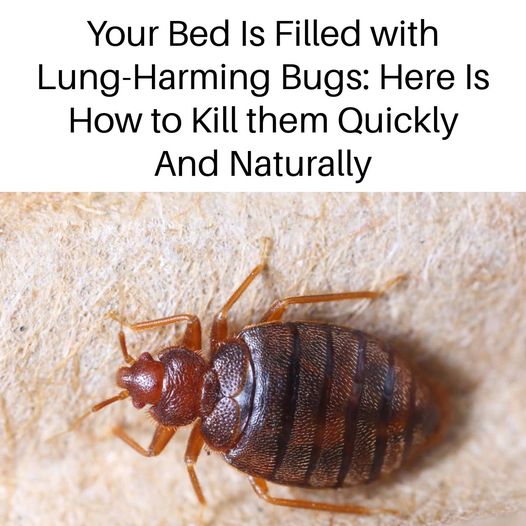When it comes to our homes, we often think of them as safe havens where we can relax and unwind. But what if you knew that your bed, the very place where you seek comfort and rest, could be filled with lung-harming bugs? Dust mites, microscopic creatures that thrive in our homes, can have harmful effects on our lung health, particularly for those with asthma or dust mite allergies. In this article, we will explore the health implications of dust mites, focusing on lung health, asthma, and dust mite allergy. Additionally, we will provide you with natural and effective ways to control the dust mite problem in your home.
Understanding the Impact on Lung Health
For individuals with asthma, allergens like dust mites, pet dander, and pollens can trigger an immune system overreaction, leading to coughing, wheezing, and difficulty breathing.1 While the outward symptoms of asthma can be severe, there is more to this condition than meets the eye. Inside the lungs, inflammation and constriction of the smooth muscle occur, resulting in the characteristic narrowing of the airways associated with asthma.
A recent study has shed light on the link between dust mites and asthma and chronic lung inflammation, increasing their odds of getting lung cancer.2 Dust mites, a common allergen for people with asthma, have been the focus of investigations due to their prevalence and potential to trigger asthma-like conditions.
Dust Mites Trigger DNA Damage
Dust mites, particularly their droppings, are the main culprits responsible for triggering allergic reactions in individuals. Up to 85 percent of people with asthma are allergic to these mites.3 Researchers have conducted experiments exposing the lungs of mice to dust mite proteins, which resulted in various changes, including inflammation, DNA damage, and cell death. When lung tissue samples from people with asthma were analyzed, increased levels of DNA repair enzymes, cytokines, and double-strand breaks were observed. These findings confirm the harmful impact of these mites on lung health and suggest that DNA repair capacity may influence the severity of asthma attacks.
Understanding the Mechanisms of Dust Mite Allergy
To fully understand the effects of dust mites, it is crucial to understand the how the allergy works. When individuals with asthma inhale the mite allergens, their immune system goes into overdrive, sending molecules called cytokines that cause inflammation and squeeze the smooth muscle in the lungs. Additionally, exposure to dust mite proteins stimulates the release of free radicals, known as reactive oxygen and nitrogen species (RONS), in the lungs. These free radicals can damage DNA, lipids, and proteins, further making asthma symptoms worse.
Handling the Dust Mite Problem Naturally
Now that we understand how these mites affect lung health, it’s crucial to explore effective ways to control these bugs in our homes. Here are some natural methods you can try:
Control What is in the Air:
- Avoid using window or attic fans, as they bring in air containing pollen, mold spores, and other allergens.
- Utilize air conditioning instead of opening windows to lessen the entry of pollen and mold spores.
- Consider using an air cleaner with a high-efficiency particulate air (HEPA) filter to remove allergens and tobacco smoke from the air.
Reduce Mites and Dust in Furniture, Carpets, Drapes, and Bedding:
- Opt for dustproof pillows and mattress covers made from tight-weave fabric to keep out mites.
- Choose furniture made of wood, plastic, leather, or vinyl that can be easily wiped clean.
-
- Remove rugs and carpeting, or limit it to specific areas of the house. Instead, use smaller rugs that can be washed.
- Replace drapes and blinds with shades or curtains.
- Remove “dust collectors” from bedrooms, such as stuffed toys, wall hangings, books, and fake flowers.
Mop, Dust, and Vacuum Regularly:
- Damp-mop hard floors daily to reduce dust and allergen buildup.
- Dust and vacuum at least once or twice a week to remove accumulated allergens. Use a dry cloth for wiping hard surfaces.
- Vacuum carpets and cloth-covered furniture using a vacuum cleaner with a HEPA filter or a special double-thickness bag that collects particles of the mites and pollen.
- Consider wet-vacuum cleaning and steam cleaning carpets to remove allergens and kill dust mites effectively.
Take Additional Steps:
-
- Keep your home well-aired and dry, as these mites thrive in humid environments. Use air dehumidifiers if necessary, and avoid having plants and fish tanks in the bedroom, as they add humidity.4
- Wash bedding, including pillowcases and mattress covers, in hot water every week and dry them at high temperatures.
Conclusion
Dust mites may be tiny, but their impact on lung health, particularly for individuals with asthma or allergies to them, is significant. The harmful effects extend to DNA damage and the severity of asthma attacks. By implementing natural methods to control the dust mite problem in our homes, we can reduce the risk of lung harm and improve our overall well-being. Remember to reduce dust and allergens in the air, furniture, carpets, drapes, and bedding, as well as maintain regular cleaning habits. By taking these steps, we can create a healthier living environment and protect our lungs from the harm caused by these lung-harming bugs.
